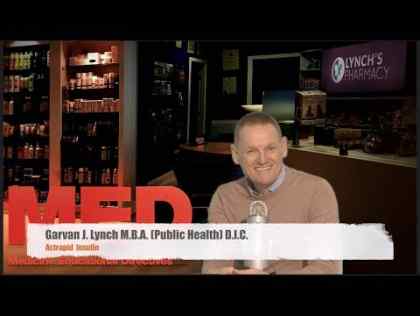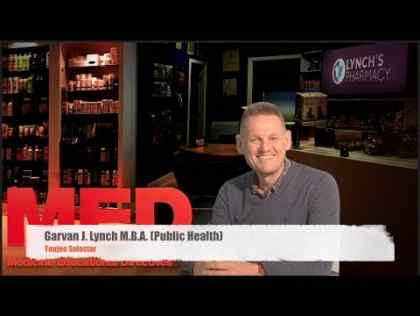In the long term, persistent hyperglycemia, even if not severe can lead to diabetes related complications affecting your eyes, kidneys, nerves and heart.
Symptoms
Hyperglycemia doesn't cause symptoms until glucose values are significantly elevated — above 200 milligrams per deciliter (mg/dL), or 11 millimoles per liter (mmol/L). Symptoms of hyperglycemia develop slowly over several days or weeks. The longer blood sugar levels stay high, the more serious the symptoms become.
Early signs and symptoms
Recognizing early symptoms of hyperglycemia can help you treat the condition promptly. Watch for:
Later signs and symptoms
If hyperglycemia goes untreated, it can cause:
-
Toxic acids (ketones) to build up in your blood and urine
-
Fruity-smelling breath
-
Nausea and vomiting
-
Abdominal pain
-
Shortness of breath
-
Dry mouth
-
Weakness
-
Confusion
-
Coma
Causes
During digestion, your body breaks down carbohydrates from foods — such as bread, rice and pasta — into various sugar molecules. One of these sugar molecules is glucose, a main energy source for your body. Glucose is absorbed directly into your bloodstream after you eat, but it can't enter the cells of most of your tissues without the help of insulin — a hormone secreted by your pancreas.
When the level of glucose in your blood rises, it signals your pancreas to release insulin. The insulin, in turn, unlocks your cells so that glucose can enter and provide the fuel your cells need to function properly. Any extra glucose is stored in your liver and muscles in the form of glycogen. This process lowers the amount of glucose in your bloodstream and prevents it from reaching dangerously high levels. As your blood sugar level returns to normal, so does the secretion of insulin from your pancreas.
For people with diabetes, the effects of insulin on your body are drastically diminished, either because your pancreas doesn't produce enough insulin (type 1 diabetes) or because your body is resistant to the effects of insulin or doesn't produce enough insulin to maintain a normal glucose level (type 2 diabetes). As a result, glucose tends to build up in your bloodstream and may reach dangerously high levels (hyperglycemia) if not treated properly. Insulin or other drugs are used to lower blood sugar levels.
Factors that contribute to hyperglycemia
Many factors can contribute to hyperglycemia, including:
-
Not using enough insulin or oral diabetes medication
-
Not injecting insulin properly or using expired insulin
-
Not following your diabetes eating plan
-
Being inactive
-
Having an illness or infection
-
Using medications, such as steroids
-
Being injured or having surgery
-
Experiencing emotional stress, such as family conflict or workplace challenges
Illness or stress can trigger hyperglycemia because hormones produced to combat illness or stress can also cause your blood sugar to rise. Even people who don't have diabetes may develop hyperglycemia during severe illness. But people with diabetes may need to take extra diabetes medication to keep blood glucose near normal during illness or stress.
Complications
Long-term complications
Untreated hyperglycemia can cause long-term complications. These include:
-
Cardiovascular disease
-
Nerve damage (neuropathy)
-
Kidney damage (nephropathy) or kidney failure
-
Damage to the blood vessels of the retina (diabetic retinopathy), potentially leading to blindness
-
Clouding of the normally clear lens of your eye (cataract)
-
Feet problems caused by damaged nerves or poor blood flow that can lead to serious infections
-
Bone and joint problems, such as osteoporosis
-
Skin problems, including bacterial infections, fungal infections and nonhealing wounds
-
Teeth and gum infections
Emergency complications
If blood sugar rises high enough or for a prolonged period of time, it can lead to two serious conditions.
-
Diabetic ketoacidosis. Diabetic ketoacidosis develops when you have too little insulin in your body. Without enough insulin, sugar (glucose) can't enter your cells for energy. Your blood sugar level rises, and your body begins to break down fat for energy. This produces toxic acids known as ketones. Excess ketones accumulate in the blood and eventually "spill over" into the urine. Left untreated, diabetic ketoacidosis can lead to diabetic coma and be life-threatening.
-
Diabetic hyperosmolar syndrome. This condition occurs when people produce insulin, but it doesn't work properly. Blood glucose levels may become very high — greater than 600 mg/dL (33 mmol/L). Because insulin is present but not working properly, the body can't use either glucose or fat for energy. Glucose is dumped in the urine, causing increased urination. Left untreated, diabetic hyperosmolar syndrome can lead to coma and life-threatening dehydration. Prompt medical care is essential.
Diagnosis
Your doctor sets your target blood sugar range. For many people who have diabetes, target levels are:
-
Fasting at least eight hours (fasting blood sugar level) — between 5 and 7 mmol/L
-
Before meals — between 4 and 7 mmol/L
-
One to two hours after meals — lower than 10 mmol/L
Your target blood sugar range may differ, especially if you're pregnant or you develop diabetes complications. Your target blood sugar range may change as you get older, too. Sometimes reaching your target blood sugar range is a challenge. But the closer you get, the better you'll feel.
Home blood sugar monitoring
Routine blood sugar monitoring with a blood glucose meter is the best way to be sure that your treatment plan is keeping your blood sugar within your goal range. Check your blood sugar as often as your doctor recommends.
If you have any signs or symptoms of severe hyperglycemia — even if they're subtle — check your blood sugar level. If your blood sugar level is 240 mg/dL (13 mmol/L) or above, use an over-the-counter urine ketones test kit. If the urine test is positive, your body may have started making the changes that can lead to diabetic ketoacidosis. You'll need your doctor's help to safely lower your blood sugar level.
Glycated hemoglobin (A1C) test
During an appointment, your doctor may conduct an A1C test. This blood test indicates your average blood sugar level for the past two to three months. It works by measuring the percentage of blood sugar attached to hemoglobin, the oxygen-carrying protein in red blood cells.
An A1C level of 7 percent or less means that your treatment plan is working and that your blood sugar was consistently within the normal range. If your A1C level is higher than 7 percent, your blood sugar, on average, was above the normal range. In this case, your doctor may recommend a change in your diabetes treatment plan.
Keep in mind that the normal range for A1C results may vary somewhat among labs. If you consult a new doctor or use a different lab, it's important to consider this possible variation when interpreting your A1C test results.
How often you need the A1C test depends on the type of diabetes you have and how well you're managing your blood sugar. Most people with diabetes, however, receive this test between two and four times a year.
References:
http://www.endocrineweb.com/conditions/hyperglycemia/hyperglycemia-when-your-blood-glucose-level-goes-too-high
http://www.diabetes.org/living-with-diabetes/treatment-and-care/blood-glucose-control/hyperglycemia.html
http://www.medicinenet.com/hyperglycemia/article.htm
https://en.wikipedia.org/wiki/Hyperglycemia
http://www.healthline.com/health/type-2-diabetes/hyperglycemia





















